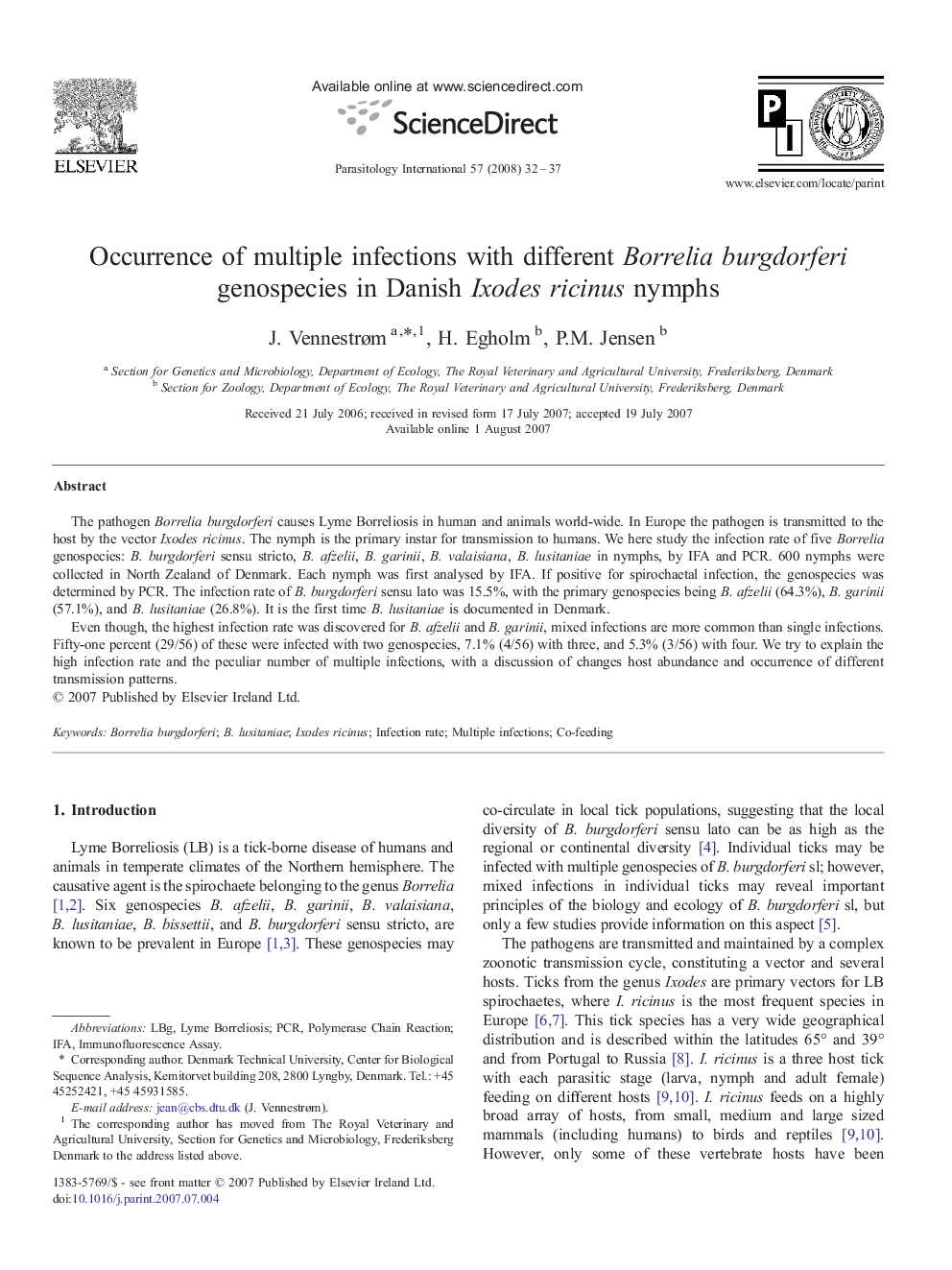| Article ID | Journal | Published Year | Pages | File Type |
|---|---|---|---|---|
| 3418230 | Parasitology International | 2008 | 6 Pages |
The pathogen Borrelia burgdorferi causes Lyme Borreliosis in human and animals world-wide. In Europe the pathogen is transmitted to the host by the vector Ixodes ricinus. The nymph is the primary instar for transmission to humans. We here study the infection rate of five Borrelia genospecies: B. burgdorferi sensu stricto, B. afzelii, B. garinii, B. valaisiana, B. lusitaniae in nymphs, by IFA and PCR. 600 nymphs were collected in North Zealand of Denmark. Each nymph was first analysed by IFA. If positive for spirochaetal infection, the genospecies was determined by PCR. The infection rate of B. burgdorferi sensu lato was 15.5%, with the primary genospecies being B. afzelii (64.3%), B. garinii (57.1%), and B. lusitaniae (26.8%). It is the first time B. lusitaniae is documented in Denmark.Even though, the highest infection rate was discovered for B. afzelii and B. garinii, mixed infections are more common than single infections. Fifty-one percent (29/56) of these were infected with two genospecies, 7.1% (4/56) with three, and 5.3% (3/56) with four. We try to explain the high infection rate and the peculiar number of multiple infections, with a discussion of changes host abundance and occurrence of different transmission patterns.
